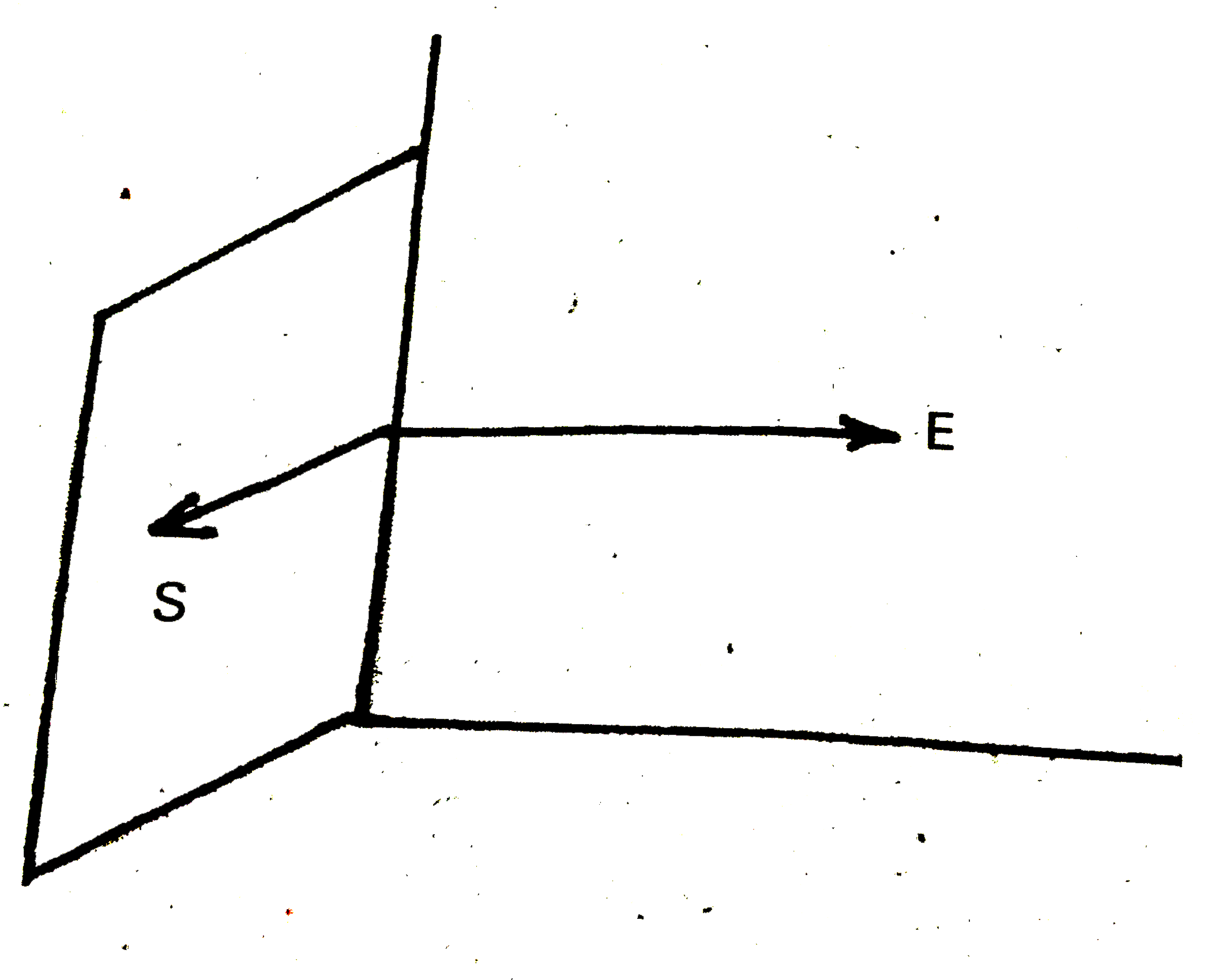Consider a uniform electric field E=3×103N/C. (a) What is the flux of this field through a square of 10 cm on a side whose plane is parallel to the yz plane? (b) What is the flux through the same square if the normal to its plane makes a 60∘ angle with the x-axis?Solution in Telugu
(a) Given E=3×103N/C
S=102cm2=102×(10−2m)2=10−2m2
θ=0∘
ϕ=EScosθ
=3×103×10−2×cos0∘
∴Φ=30Nm2C−1
(b) If θ=60∘,ϕ=EScosθ
=3×103×10−2×cos60∘
∴ϕ=15Nm2C−1

Topper's Solved these Questions
- ELECTRIC CHARGES AND FIELDSBook:VIKRAM PUBLICATION ( ANDHRA PUBLICATION)Chapter:ELECTRIC CHARGES AND FIELDSExercise:ADDITIONAL EXERCISES
Explore 53 Videos
- ELECTRIC CHARGES AND FIELDSBook:VIKRAM PUBLICATION ( ANDHRA PUBLICATION)Chapter:ELECTRIC CHARGES AND FIELDSExercise:DAM SURE VSAQ
Explore 17 Videos
- ELECTRIC CHARGES AND FIELDSBook:VIKRAM PUBLICATION ( ANDHRA PUBLICATION)Chapter:ELECTRIC CHARGES AND FIELDSExercise:LONG ANSWER QUESTIONS
Explore 3 Videos
- DUAL NATURE OF RADIATION AND MATTERBook:VIKRAM PUBLICATION ( ANDHRA PUBLICATION)Chapter:DUAL NATURE OF RADIATION AND MATTERExercise:DAM SURE (VSAQ)
Explore 2 Videos
- ELECTROMAGNETIC INDUCTION Book:VIKRAM PUBLICATION ( ANDHRA PUBLICATION)Chapter:ELECTROMAGNETIC INDUCTION Exercise:Additional EXERCISES
Explore 15 Videos
Similar Questions
What is the force between two small charged soheres having charges of 2×10−7C and 3×10−7C placed 30 cm apart in air ?
View SolutionWhat is meant by the statement 'charge is quantized' ?
View SolutionDefine electric flux. Applying Gauss's law and serive the expression for electric intensity due to an infinite long straight charged wire. (Assume that the electric field everywhere radial and depends only on the radial distance r of the point from the wire.)
View SolutionThe wavelength of electromagnetic radiation is doubled. What will happen to the energy of the photons of the new radiation ?
View SolutionSuppose the loop in Textual Exercise 4 is stationary but the current feeding the electromagnet that produces the magnetic field is gradually reduced so that the field decreases from its initial value of 0.3 T at the rate of 0.02Ts−1 .If the cut is joined and the loop has a resistance of 1.6Ω how much power is dissipated by the loop as heat ? What is the source of this power ?
View SolutionConsider a uniform electric field E=3×103ˆiN/C. (a) What is the flux of this field through a square of 10 cm on a side whose plane is parallel to the yz plane ? (b) What is the flux through the same square if the normal to its plane makes a 60∘ angle with the x-axis ?
View SolutionConsider a uniform electric field E=3×103ˆiN/C. (a) What is the flux of this field through a square of 10 cm on a side whose plane is parallel to the yz plane ? (b) What is the flux through the same square if the normal to its plane makes a 60∘ angle with the x-axis ?
View SolutionConsider a uniform electric field E=3×103ˆiN/C. A square of 10 cm on a side whose plane is parallel to the yz plane.
What is the flux through the same square if the normal to its plane makes a 60∘ angle with the x-axis?
View SolutionConsider a uniform electric field vecE=3xx10^(3)hatiNC^(-1) a. Whate is the flux of this field through a square of 0.1 m on a side whose plane is parallel to the y-z plane? b. What is the flux through the same square if the normal to its plane makes a 60 angle with x-axis?
View SolutionConsider a uniform eleceric field =3×103ˆiN/C.
a. What is the flux of this field through a square of 10cm on a slide whose plane is parallel to the yz plane?
b. What is the flux through the same square if the moral to its plane makes a 60∘ and with the satis?
View SolutionConsider a uniform electric field E=3×103ˆi N/C (a) what is the flux of this field through a square of 10 cm on a side whose plane is parallel to the yz plane (b) what is the flux through the same square if the normal to its plane makes a 60∘ angle with the X axis ?
View SolutionConsider a uniform electric field E= 3xx10^(3) hati N/C (a) what is the flux of this field thriought a square of 10 cm on a side whose plane is parallel to the yz plane (b) hwhat is the flux through the same a 60^(@) m angle with the x axis
View SolutionConsider a uniform electric field E=3×103ˆiN/C. (a) What is the flux of this field through a square of 10 cm on a side whose plane is parallel to the yz plane ? (b) What is the flux through the same square if the normal to its plane makes a 60∘ angle with the x-axis ?
View Solutionconsider a uniform electric field oversetto E =3xx 10^(3) hati N//C What is the flux of this field through a square of 10 cm on a side whose plane is parallel to the yz plane? (b) What is the flux through the same square if if the normal to its plane makes a 60^(@) angle with the x-axis?
View SolutionConsider a uniform eleceric field =3×103ˆiN/C.
a. What is the flux of this field through a square of 10cm on a slide whose plane is parallel to the yz plane?
b. What is the flux through the same square if the moral to its plane makes a 60∘ and with the satis?
View Solution
